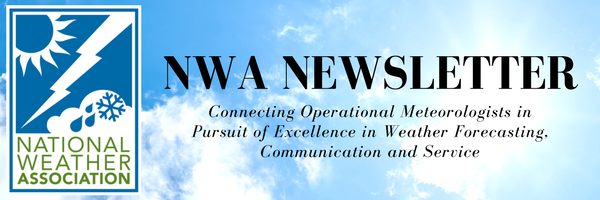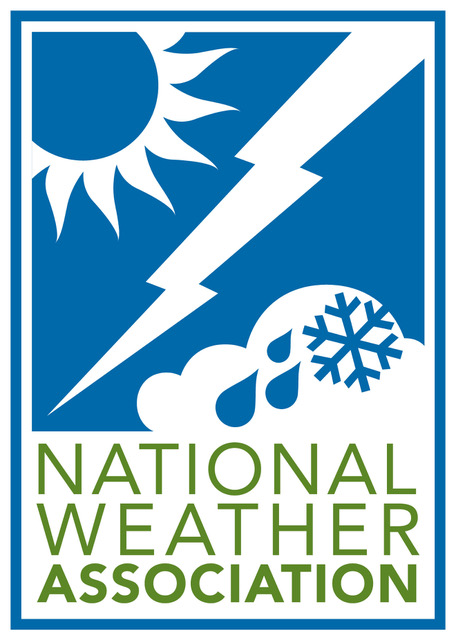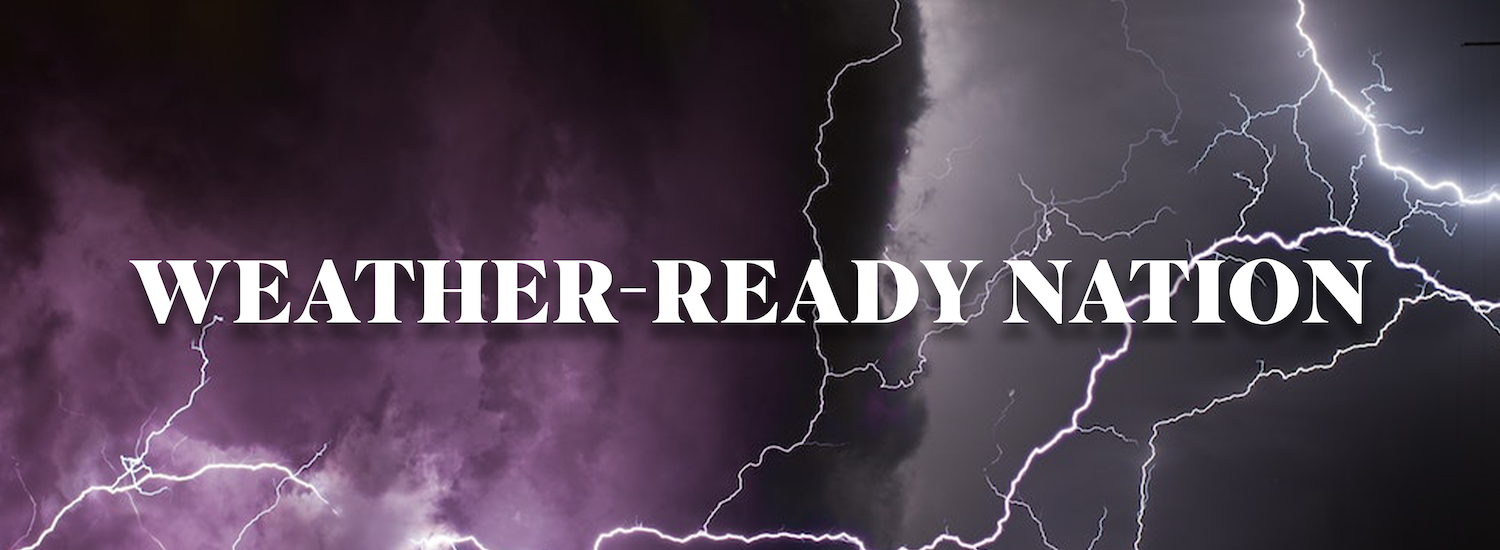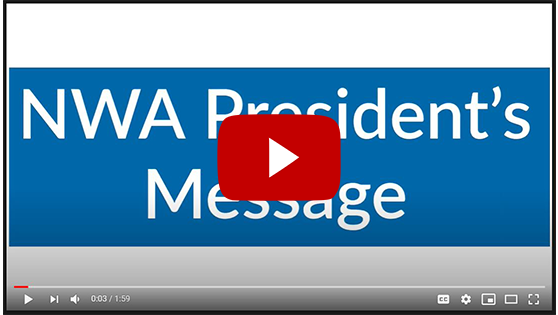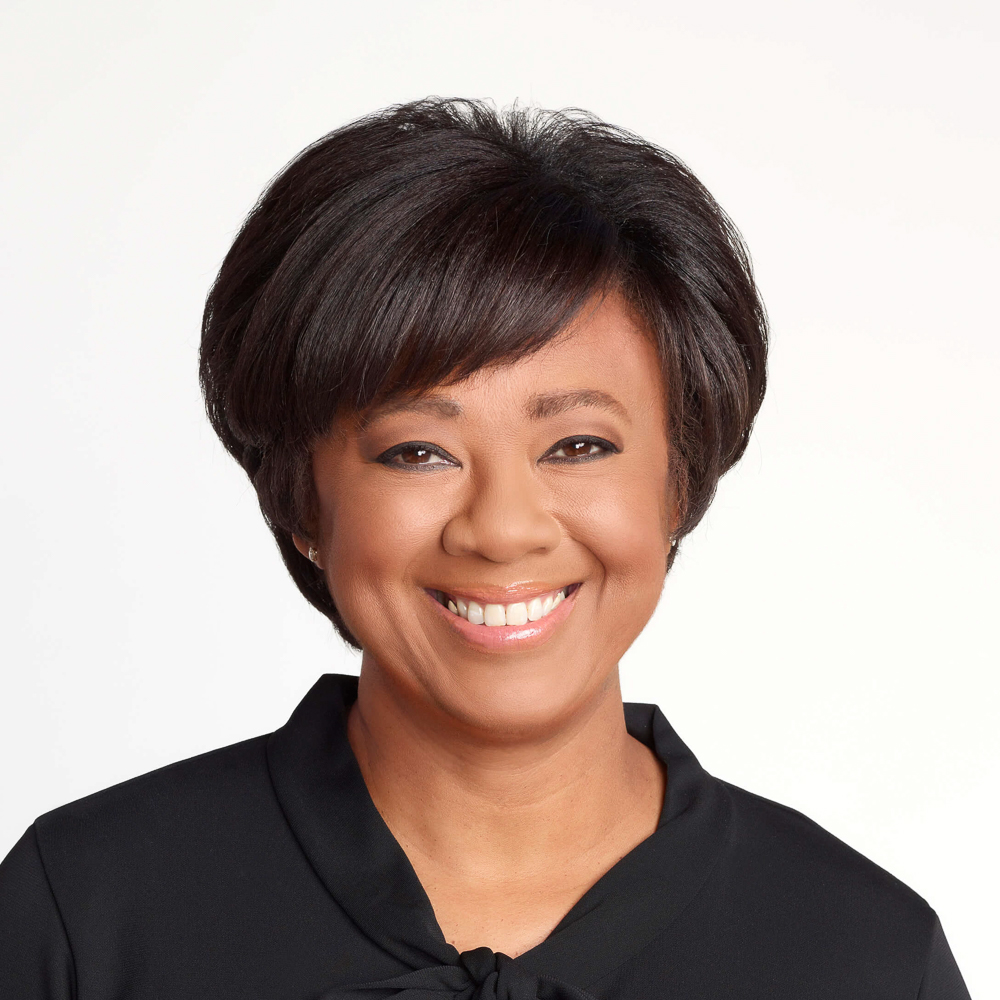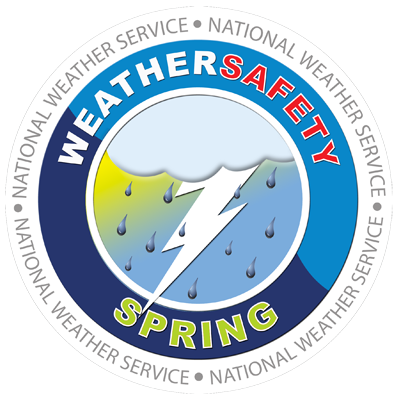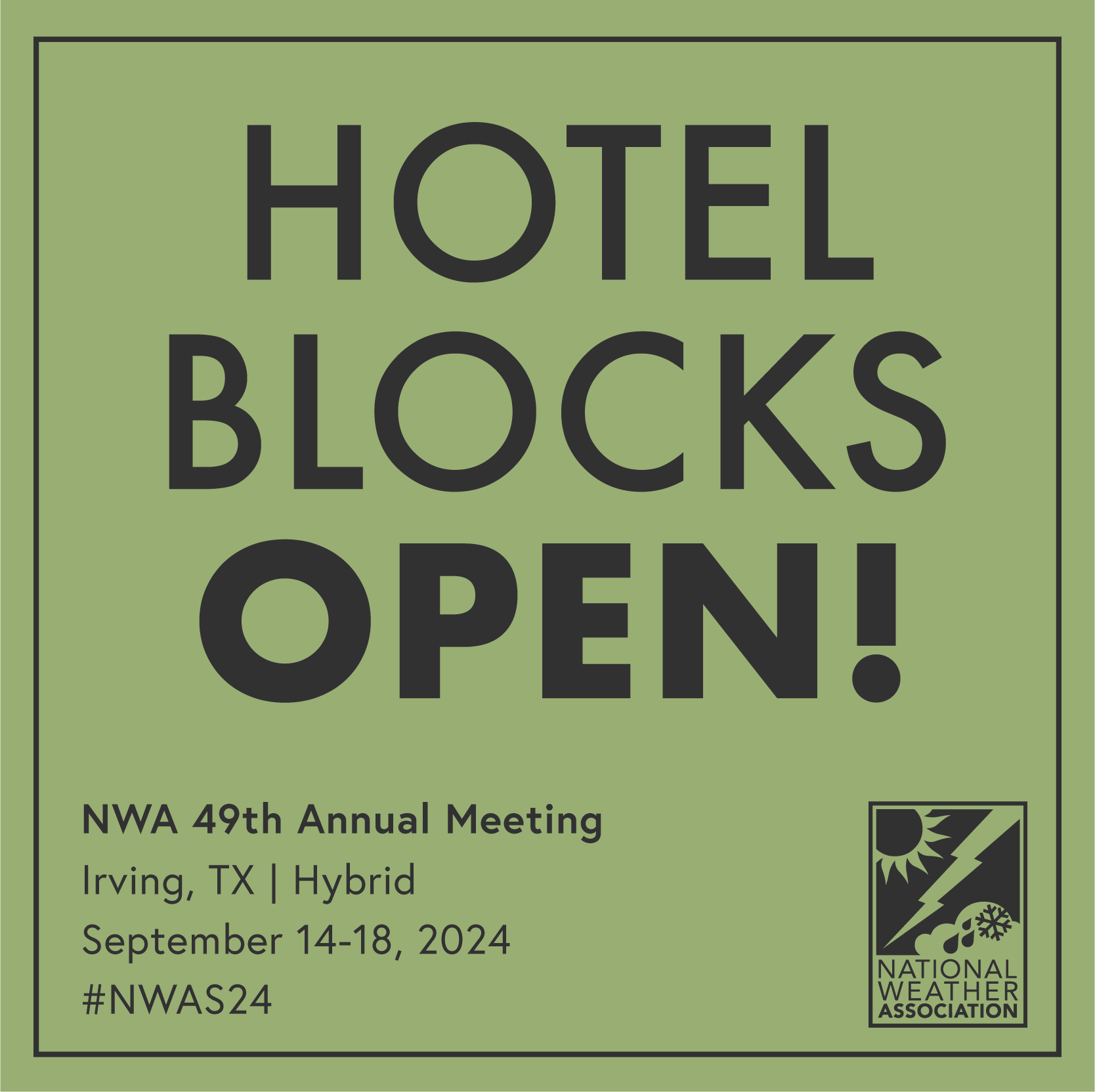|
NWA August 2020 Newsletter
Issue 20 - 8
What's in this newsletter:
Video Transcript:
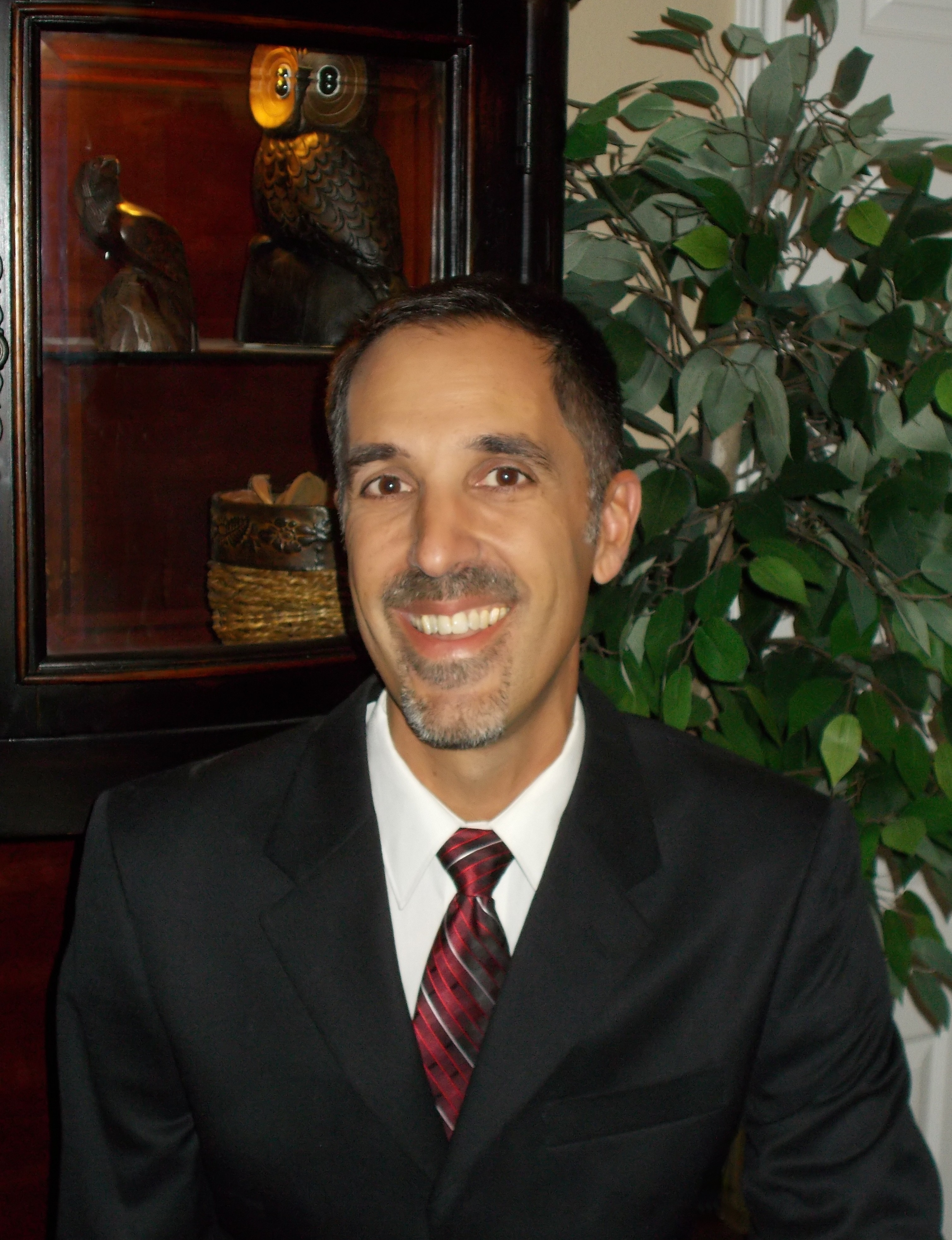
Hello everyone, and welcome to August. We are now about a month and a half away from our annual meeting in mid-September. Some exciting things are really starting to take shape. I just recently got a chance to look at the preliminary agenda that the steering committee and others have put together. And I can tell you that we have one heck of an action packed week waiting for us when we get there.
I'm going to talk to you a little bit about that agenda here in a second, but I know that many of you have questions about what the agenda is going to look like and when registration is going to open up. Well, I have some good news for you there. All of that is about to happen within the next week to week and a half. So please stay tuned to the NWA communication channels, like our webpage, social media and our emails to our members for more information on that.
So let's talk a little bit more about that agenda. Most of you know by now that my theme is squarely centered on artificial intelligence, machine learning and digital communication, and how those three things are really going to affect our career field over the next 10 to 20 years. Our three keynote speakers for the annual meeting are squarely centered on that theme, and will be able to speak to it directly.
First up on Tuesday is Dr. Avi Goldfarb. Dr. Goldfarb is the Professor at the Rotman School of Economics at the University of Toronto. He is also an author who wrote the book called "Prediction Machines, The Simple Economics of Artificial Intelligence." If you haven't read this book yet, you should. It's a page turner. I could barely put it down when I was reading it, mainly because of its applicability to the world of meteorology.
But Dr. Goldfarb is going to specifically talk to us about how basic economic principles are really going to guide how humans are going to interact with prediction as it becomes more accurate and more plentiful in the future. There are direct correlations to how humans in the form of meteorologists are going to interact with prediction machines in the future. It's sure be a really good talk and one you definitely won't want to miss.
Our next keynote speaker is Dr. Florence Rabier, Director General of the European Center for Medium Range Weather Forecasts. She is also a world renowned expert in the area of numerical weather prediction. She's going to speak to us generally about the state of numerical weather prediction and what we can expect from numerical weather prediction in the near future. I am sure it will have a bend towards what is going on at ECMWF specifically, which will be of interest to our members as we use that model just about every day in our day-in-day-out forecasting that we do. I imagine that she will also speak to the longer range outlooks for weather prediction and what they may hold as well. Sure to be an interesting talk.
Our third keynote speaker is Dr. Desiree Hill, Professor from the University of Central Oklahoma and a renowned expert on crisis communication and journalism. She is going to speak to the third component of our theme, digital communications, and not only discuss how communications occur now, but how they may change in the next decade or two. This is sure to have wide applicability with our membership, as we all have to communicate threats in one way or another.
So you can see that each of our three keynotes is centered on our theme of moving forward together. These three talks are bound to be fascinating and will give us a chance to interact with experts not only in our own field, but outside of our field as well. My hope is that we come away from the annual meeting with a renewed sense of effort to look towards the future, understand it, and begin to evolve to it.
Again, thanks for listening to the August President's message. We'll talk to you next month as we get even closer to the annual meeting. So take care and have a great month.
Return to Top
Registration Now Open for Virtual Annual Meeting
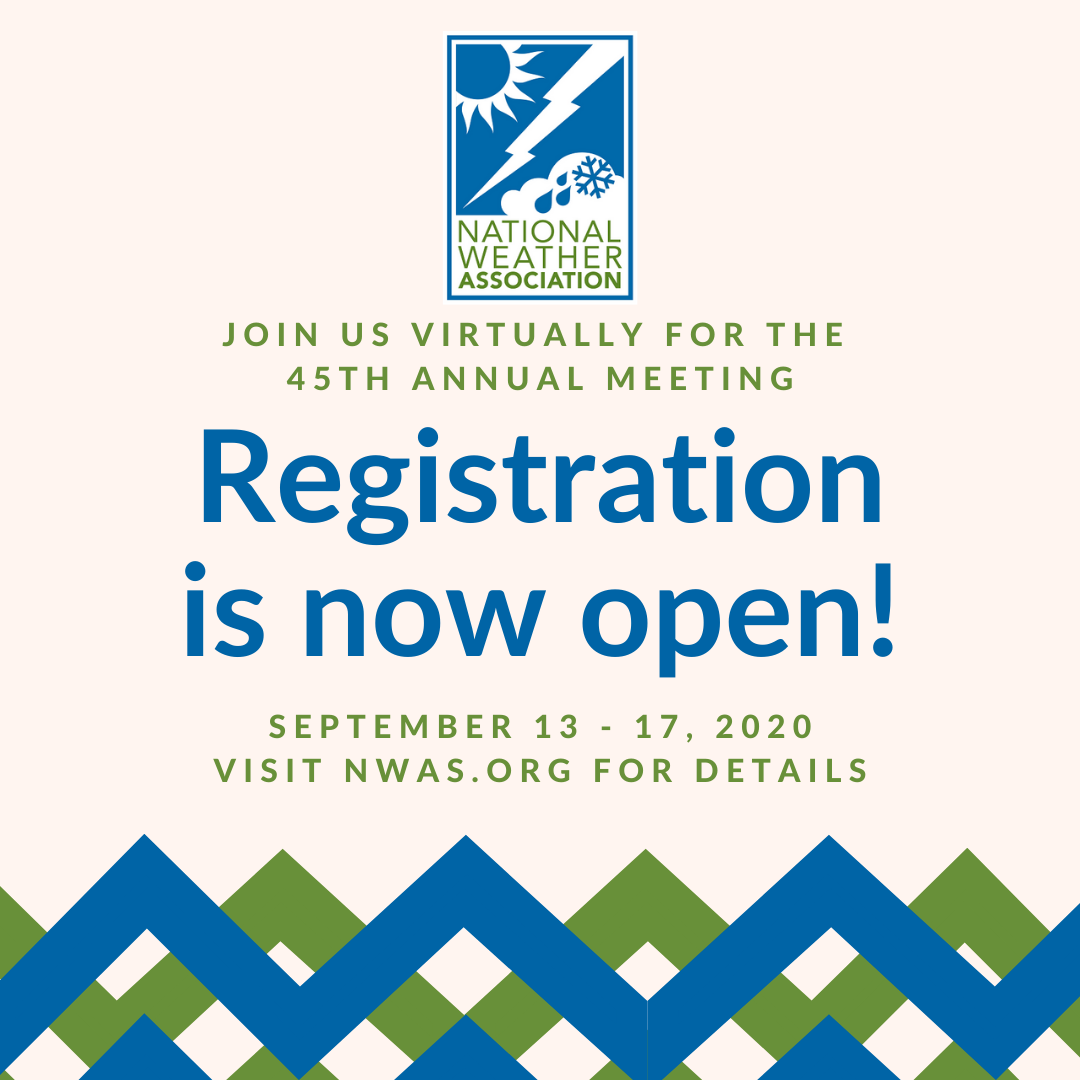
REGISTER HERE.
Sunday, Sept. 13: Student and Broadcaster Sessions
Monday, Sept. 14: Special workshops and social event
Tuesday - Thursday, Sept. 15-17: Full event
Watch for the Exhibitor Virtual Booth registration to open the week of August 17.
We are working on releasing more details on the Annual Meeting schedule.
Emergency Managers are encouraged to contact NWA headquarters for a discount code before submitting registration. Contact us at [email protected].
Return to Top
Annual Meeting Keynote Speakers
NWA Headquarters
Dr. Avi Goldfarb

Avi Goldfarb is the Rotman Chair in Artificial Intelligence and Healthcare and a professor of marketing at the Rotman School of Management, University of Toronto.
Avi is also Chief Data Scientist at the Creative Destruction Lab, Senior Editor at Marketing Science, and a Research Associate at the National Bureau of Economic Research. Avi’s research focuses on the opportunities and challenges of the digital economy and Artificial Intelligence.
He has published over 70 academic articles in a variety of outlets in marketing, statistics, law, computing, and economics.
Along with Ajay Agrawal and Joshua Gans, Avi is the author of the bestselling book Prediction Machines: The Simple Economics of Artificial Intelligence.

Prediction Machines follows inescapable logic to explain how to navigate the changes on the horizon. The impact of AI will be profound, but the economic framework for understanding it is surprisingly simple.
Dr. Florence Rabier

Dr. Rabier has been Director-General of European Center for Medium-Range Weather Forecasts (ECMWF). A position she has held since January 2016.
Dr. Rabier is an internationally recognized expert in numerical weather prediction, whose leadership has greatly contributed to delivering major operational changes at both ECMWF and Météo-France.
She is especially well known within the meteorological community for her key role in implementing an innovative data assimilation method (4D-Var) in 1997, which was a first worldwide and contributed to an optimal use of satellite observations in weather forecasting.
She also led an international experiment involving a major field campaign over Antarctica, in the context of the International Polar Year and the WMO THORPEX program.
Dr. Desiree Hill

Dr. Desiree Hill is a researcher, professor, former broadcast executive, and documentary filmmaker.
Her research focuses on journalism/trauma, severe weather media use, and new media. She has presented her research internationally, including the International Conference on Communication and Mass Media in Athens and the International Crisis Communication Conference in Sweden.
Desiree’s broadcast experience includes Executive Producer for KOCO and KWTV in Oklahoma City, Vice-President of News for Pappas Telecasting, and Senior Strategist for AR&D (a broadcast consulting firm). She continues to work with newsrooms across the country, including KOCO following the 2013 tornado.
Her recent film "Words from a Bear" (associate producer) premiered at Sundance, aired in the PBS American Masters series, and is nominated for a best documentary Emmy.
Desiree teaches broadcast journalism at the University of Central Oklahoma.
Return to Top
Annual Meeting Student Conference
by John Banghoff and Amber Liggett, NWA Student Conference Planning Committee
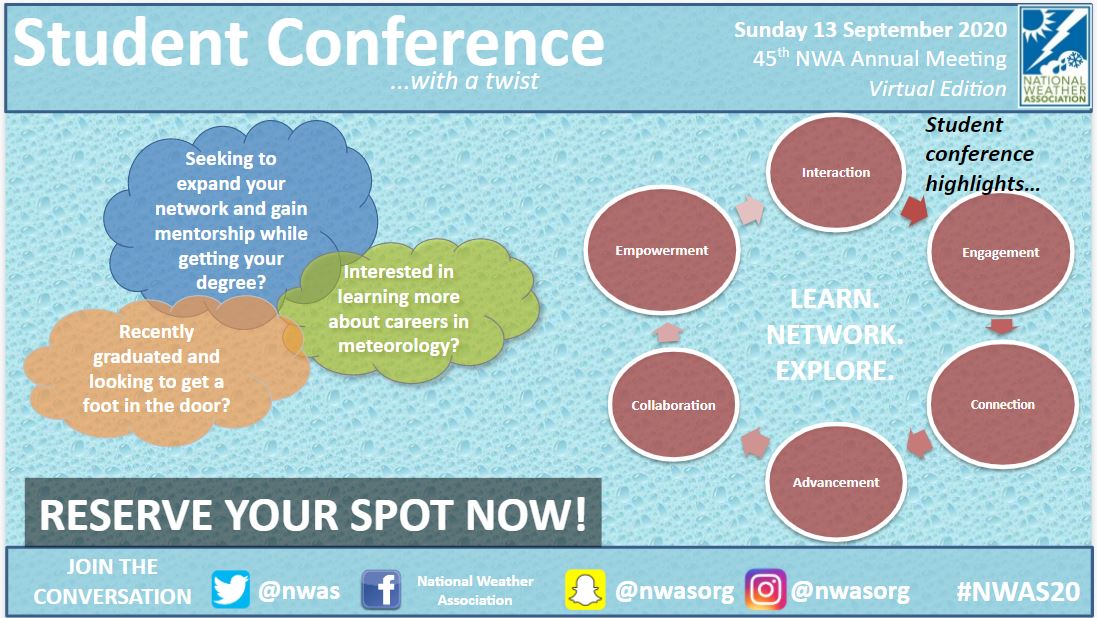
Students and Early Career-Professionals:
The National Weather Association Student Conference Planning Committee is excited to announce details for the 45th Annual Meeting of the NWA. The Student Conference will be held on Sunday September 13, 2020 from 12pm-7pm ET, the Forecasting Master Class will be held on Monday September 14, 2020 from 10am-12pm ET, and daily Student Map Briefings will be held each day during the Annual Meeting on Tuesday-Thursday. Just like the Annual Meeting, all Student Conference activities will be held virtually with a wide range of speakers, panels, and networking opportunities.
We have been working hard to ensure that the most important parts of the Student Conference are preserved - (1) networking with meteorologists, EMs, professors, and other professionals and (2) illuminating the wide range of career opportunities within the field of meteorology and related professions.
This year’s Student Conference takes to heart the Annual Meeting theme: “Forward Together: Meeting the challenges in operational meteorology in the age of artificial intelligence, analytics, and digital communications”. You can find the preliminary agenda outlined below (Note, all times are listed in Eastern Daylight Time). We will provide more details on the NWA website and social media as speakers are confirmed.
Sunday September 13, 2020
12:00 PM - 1:00 PM - Bring your own lunch and Introductions
1:00 PM - 1:30 PM - Keynote: Future Horizons in Meteorology & Beyond
1:30 PM - 2:15 PM - Panel: Rapidly Transitioning to a Virtual Working Environment
2:15 PM - 2:45 PM - The Economic Benefits of Weather Forecasting
2:45 PM - 3:00 PM - Break
3:00 PM - 3:30 PM - COVID-19 & Hazardous Weather
3:30 PM - 4:00 PM - Hazardous Weather Communication During Quarantine
4:00 PM - 4:30 PM - Artificial Intelligence at the Warning Desk
4:30 PM - 5:00 PM - Open Forum - you name it and we’ll have a conversation!
5:00 PM - 6:00 PM - Speed Mentoring Breakout Sessions
6:00 PM - 7:00 PM - Speed Mentoring Dinner: Bring your own dinner and continue the conversation with the speed mentors you want to connect with further!
Monday September 14, 2020
10:00 AM - 12:00PM - Forecasting Master Class
Tuesday September 15, 2020 - Thursday September 17, 2020
Daily Student Map Briefing - Time/Details TBD
10:00 AM - 5:00 PM Annual Meeting Sessions
TL:DR Because the conference is virtual this year, registration prices for students are very affordable at a rate of $50 for student members and $190 for early career members. You will be able to access all content from the Student Conference and Annual Meeting at any time during and after the meeting! You can submit your registration here. After you register, please save the date for the Student Conference on Sunday September 13th & Forecasting Master Class on Monday September 14th, and consider signing up to do a Student Map Briefing by yourself or with some peers during the Annual Meeting. If you are interested in more information about or wish to sign up for a Student Map Briefing, please contact Jared Allen ([email protected]). We hope to see you in September! If you have any questions, please reach out to Student Conference chairs John Banghoff ([email protected]) or Amber Liggett ([email protected]).
We’re excited to “see” you very soon!
Return to Top
Annual Meeting Sponsorship Tiers
NWA Headquarters
Sponsorships support meeting opportunities for attendees and are a way to connect to the weather community. To thank you, we offer the following ways to interact with and promote your organization to NWA meeting attendees, members and fans. Attendees include government, private sector and military forecasters, broadcasters, social scientists, students, professors, researchers, emergency managers and more.
All Sponsors Receive:
- Company logo included on 2020 Annual Meeting webpage, listing in the sponsor area of the meeting app, and NWA Newsletter
- At least one mention in NWA Social Media posts
- Recognition at the start of key meeting sessions and events including:
- Broadcast Meteorology Workshop
- Student Session
- Monday evening welcome event
- General Session Tuesday
- Logo shown before the start of the NWA Annual Award presentations
- The name, email and affiliation of registered attendees
Title Sponsor - starting at $15,000 (one available)
Additional benefits:
- One complimentary virtual exhibit booth with five meeting registrations
- Listed as Title Sponsor on the opening screen of the meeting app
- Two (2) hours’ worth of complimentary break-out sessions for your private use
- Logo on NWA website home page and NWA Member Connect
- Four (4) additional social media mentions
- Complimentary ad in two (2) NWA Newsletters
Titanium Sponsor - starting at $10,000 (two available)
Additional benefits:
- One complimentary virtual exhibit booth with three meeting registrations
- Listed as Titanium Sponsor on the opening screen of the meeting app
- A one (1) hour complimentary break-out session for your private use
- Logo on NWA website home page and NWA Member Connect
- Three (3) additional social media mentions
- Complimentary ad in one (1) NWA Newsletter
Platinum — $5000
Additional benefits:
- One complimentary virtual exhibit booth with two meeting registrations
- Logo on NWA website home page and NWA Member Connect
- Two (2) additional social media mentions
Gold — $3000
Additional benefits:
Silver — $1500
Additional benefits:
Supporting - $250 to $1499
If you would like to sponsor or co-sponsor an event, here are options. Please contact the NWA Office for details.
- The Meeting Overall Student Session
- Student Speed Mentoring
- Broadcaster Reel Swap
- Monday Evening Networking Event Breaks
- NWA Annual Awards Event
- Supporting Women in Meteorology Event
Have an idea that works better for you?
Please contact us via email or phone: 405-701-5167
Return to Top
Successes and impacts from the David Sankey Minority Scholarship in Meteorology
by Alan Sealls, NWA Past President, 2018
The winds of social change are blowing. That's an understatement. Current events highlight the historic systemic disparities, injustices, racism, and sometimes physical threats to lives of African Americans and other people of color. From personal experience, these are very real things that factor into our professional lives and the lives of those we serve as meteorologists.
Awareness of racism is progress. Action toward equality is essential. The National Weather Association is committed to diversity, inclusion, and fairness. That might sound like a standard organizational statement, but I can say that as a Past President who knows the character of the leadership and the efforts in place.
After the death of George Floyd, like many of us, I felt I had to do something. Among other things, I was compelled to donate to the David Sankey Minority Scholarship in Meteorology (https://nwas.org/scholarship-grants/nwa-david-sankey-minority-scholarship-meteorology/). David Sankey was an NWA Charter member who hired me as an intern at The Weather Channel when I was in college. That opportunity played a great role in my professional success. I was an NWA Councilor when Dave passed away, and I helped NWA honor his legacy as an impactful operational meteorologist with a scholarship funded by his family.
Financial support for African Americans and other minorities who are underrepresented in meteorology is more relevant than ever. In the nearly two-decade history of the scholarship, recipients have become strong contributors to meteorology, role models, and leaders, representing the unlimited potential in all humanity. Here are just some of their stories.
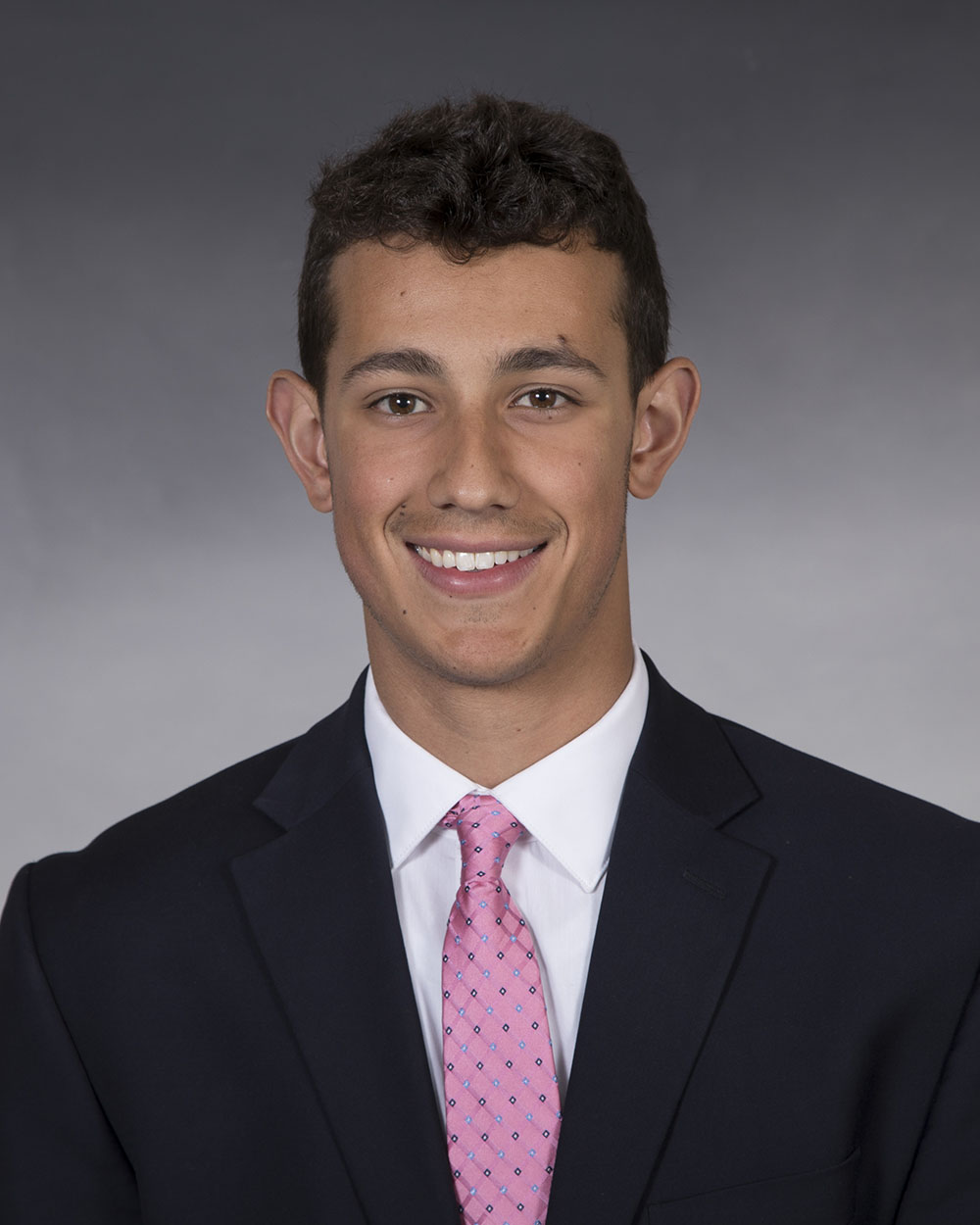
Jeremiah Piersante was the Sankey scholarship winner in 2017. He recently defended his M.S. thesis at Colorado State University and is now embarking on a Ph.D. program at SUNY Albany, focusing on tropical cyclones. From his research experiences, Jeremiah shares, “Global collaborationwith historically underrepresented groups is essential for improving our understanding of weather and climate.”
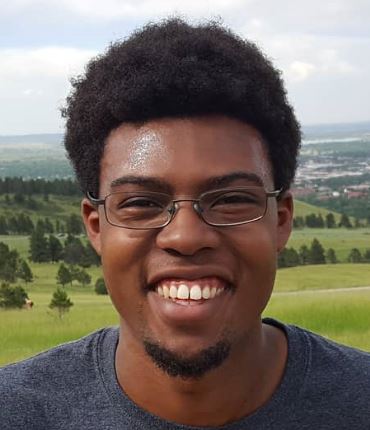
Ari Brown is a senior in meteorology at North Carolina State University. He was the 2016 scholarship awardee. While his U.S. Department of Energy internship is pushed to next year due to the pandemic, Ari says, “My overarching goal is to engage in interdisciplinary work that integrates meteorology with social science and geographic information science. Diversity has been scientifically demonstrated to add value across the board and this is particularly relevant for communicating weather information to minority groups.”

Amber Liggett received the Sankey scholarship in 2015. She is now the Public Information Officer for the Pennsylvania Department of Health, and a freelance broadcast meteorologist. Not only does she run her own company, Amber's Amazing Animal Balloons, but she is an NWA Board Director. Amber says, “It's imperative for minority youth to see people who look like themselves in the field of meteorology so that they can see first-hand that they too can become a meteorologist!”
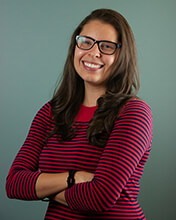
The 2009 Scholarship winner was Vanessa Vincente. After participating in UCAR’s Significant Opportunities in Atmospheric Research and Science (SOARS) program, she earned an M.S. at CSU. She now works as a staff meteorologist with the COMET program. Vanessa was the first in her family to attend college. She maintains a mission to “develop useful and practical training lessons to educate users on forecast product applications and weather risk communication strategies, inspire underrepresented students to pursue STEM careers, and guide them to the resources they need to successfully attain those degrees.”
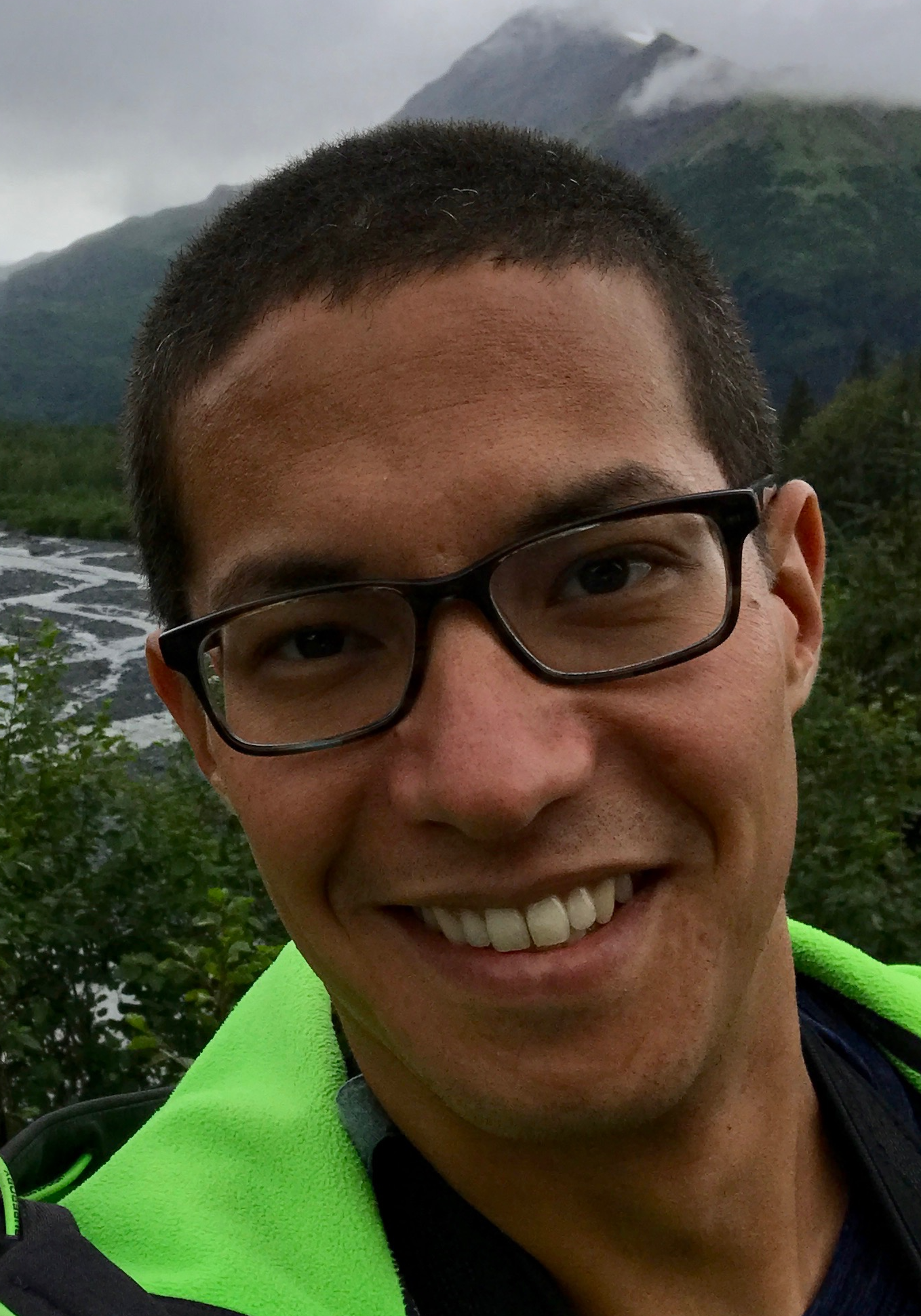
Dan Chavis was awarded the Sankey scholarship in 2005. He shares that the award “helped boost my confidence that I was someone who could do well with a career in this field.” Dr. Chavis is now Assistant Professor of Atmospheric Science at Purdue University. Having published two dozen peer-reviewed papers on tropical weather, Dan leads a team of three Ph.D. students and one post-doctoral researcher. From that position, Dr. Chavis says, “Dismantling systemic racism requires substantive action from everyone in our community to define a culture of inclusion and open doors to careers in our field for minorities.”
It was awesome for me to hear of these successes and goals, especially given that an NWA scholarship was a part of it. What better feeling is there than to help someone grow and achieve, knowing that they will do the same for someone else?!
Now is your opportunity to contribute to growth within our profession and society. Take action. Donate to the National Weather Association Foundation’s David Sankey Minority Scholarship in Meteorology. Promote it and the other NWAF scholarships (https://nwafoundation.org/scholarships-grants/) to minority students that you interact with. If your employer matches donations, please give them the opportunity to also be a part of something great.
Return to Top
Using Emotion-focused Theories to Understand how Meteorologists Cope with Stress and Traumatization in High-Impact Weather Events
by Matthew J. Bolton, College of Arts and Sciences, Saint Leo University, Saint Leo, Florida, How The Weatherworks, Naples, Florida,
Alan E. Stewart, College of Education, University of Georgia, Athens, Georgia
and H. Michael Mogil, How The Weatherworks, Naples, Florida
Meteorologists are increasingly concerned with mental health as evidenced by discussions in publications, at conferences, and on social media. However, discourse thus far has been primarily anecdotal and psychological concepts related to trauma have been only loosely defined. Thus, this article introduces theoretical concepts related to trauma and provides some insight on emotional processing in the context of the meteorological workplace.
Many meteorologist readers have heard of post-traumatic stress disorder (PTSD), which occurs due to injury or severe psychological shock. Symptoms include re-experiencing of the traumatic event through memory-based flashbacks, persistently negative thoughts and feelings and a distorted sense-of-self, and negative arousal (e.g., aggression, recklessness). At the heart of post-traumatic stress, however, are peri-traumatic emotions. These are the feelings of intense fear, anxiety, stress, horror, confusion, and helplessness that occur in the moments surrounding traumatic events. Under the right conditions, they can lead to PTSD. They are also present in the critical incident situations meteorologists routinely face in providing integrated decision support services—situations during which secondary feelings of trauma might arise. The moments during and after high-impact weather events can be traumatizing for meteorologists as they provide important forecasts, reflect on the events, and assess possible damage sites.
There is widespread anecdotal evidence that high-impact weather events may contribute to trauma in meteorologists. While peri-trauma processing and coping responses vary, theories of experiential emotion-processing suggest positive responses to traumatization can be elicited by understanding one’s emotions and the contexts in which they materialize. It is important to recognize trauma as a normal psychological response to extreme events. It is the brain trying to make sense of the event, trying to perceptually assimilate and re-assimilate it, like a computer restarting with an error message on the screen. Prior trauma exposure puts one at greater risk for future peri-traumatization or clinical PTSD.
Two emotion types in experiential-processing theories of emotion are primary adaptive and primary maladaptive (the other types, secondary and instrumental, are beyond the scope of this article), in which a primary emotion is one’s first situational response. These mental states push an individual towards positive or negative outcomes. A forecaster might feel grief upon learning of tornado-related fatalities. This is a positive response because it allows the individual to acknowledge sadness and move on from irrevocable loss (of life). A maladaptive response might be self-criticism for a missed warning that, rather than triggering desire for learning where one’s analyses went wrong, lends itself to shame and diminished self-worth.
Hopefully, this discussion will facilitate broader discourse and begin to show how an understanding of emotional processes can be applied within the meteorological workplace. An extended paper in which we further apply several psychological theories to the meteorological workplace and discuss mental health coping techniques for meteorologists is forthcoming. We encourage further discussion as well as debate around these topics and would welcome correspondence.
Author note: Matthew Bolton is a graduate student in psychology (primarily interested in the person-centered approach to counseling, with interests in emotion-focused, acceptance and commitment, and compassion-focused therapies). He has research interests at the intersection of meteorology and psychology. H. Michael Mogil is a Certified Consulting Meteorologist and facilitator of nationwide weather learning; he has been a facilitator of hands-on, minds-on weather learning since 1979. Dr. Alan Stewart is a weather and climate psychologist. Bolton was supported academically during the period of this work by an American Meteorological Society-awarded and U.S. National Weather Service-sponsored Graduate Fellowship. The opinions, conclusions, and/or recommendations expressed here are those of the authors and do not necessarily reflect the views of the American Meteorological Society or National Weather Service.
Correspondence regarding this manuscript should be addressed to Matthew Bolton, College of Arts and Sciences, Saint Leo University, Saint Leo, Florida, and How The Weatherworks, Naples, Florida. Email: [email protected]
Return to Top
U.S. Lightning Fatalities
by lightningsafetycouncil.org
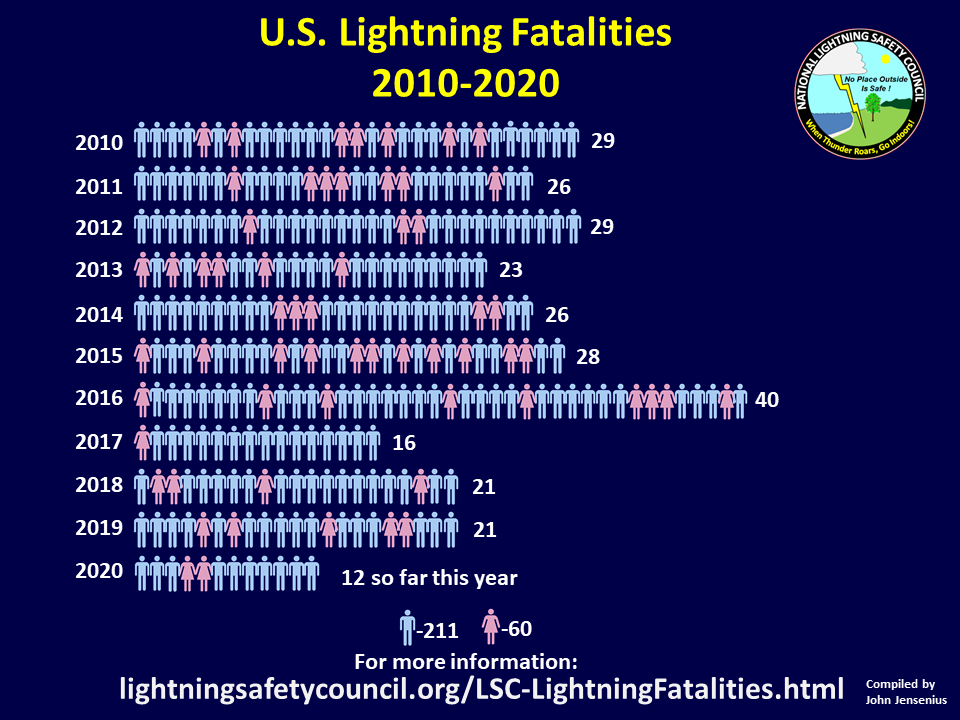
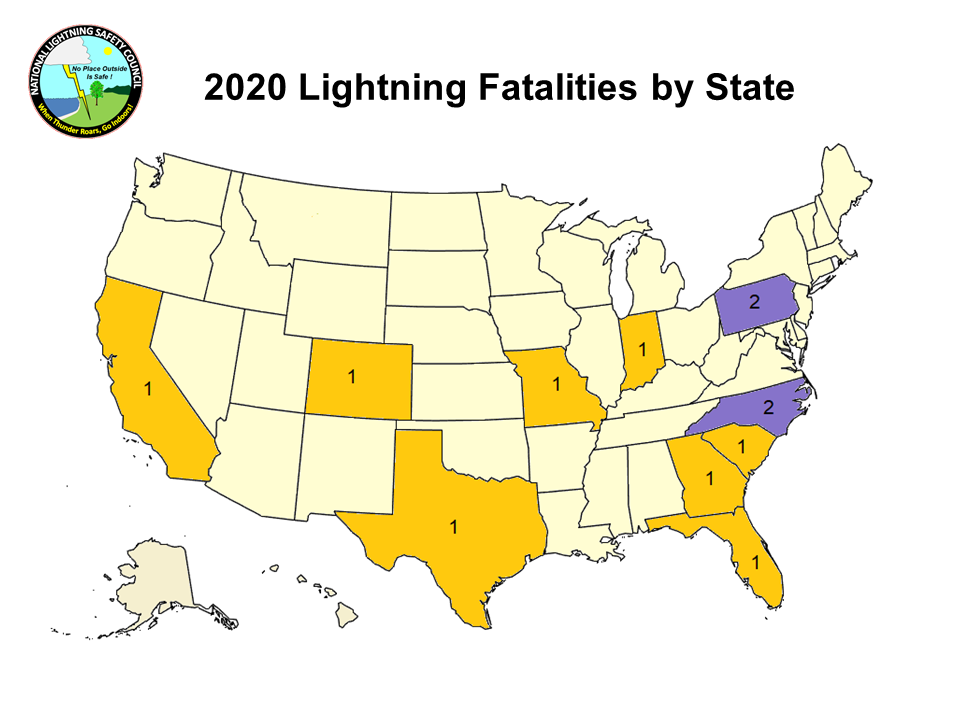
More information at lightningsafetycouncil.org.
Return to Top
The full NWA Event Calendar is located in Member Connect.
Return to Top
August Webinar: When the Field Meets the Lab: The IBHS Hail Research Story
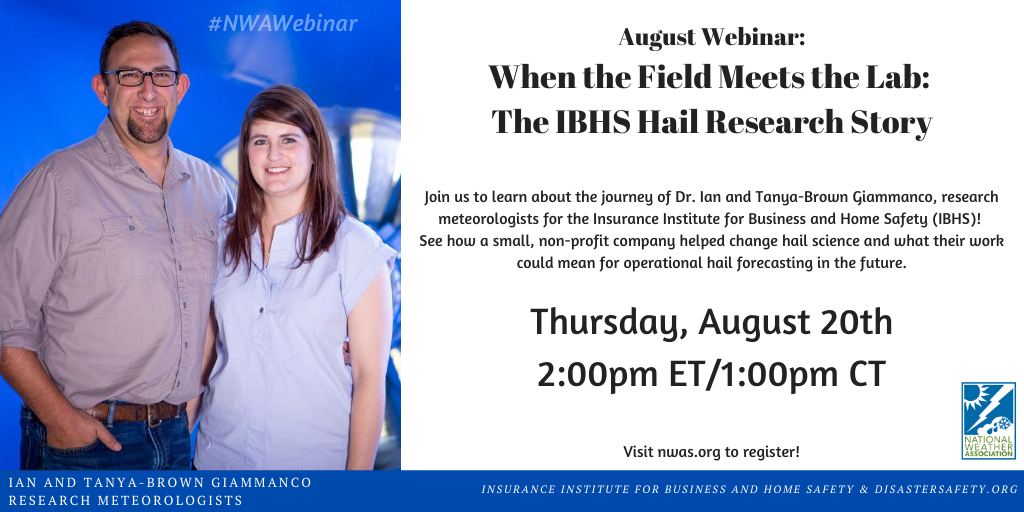
Ten years ago, Drs. Ian Giammanco and Tanya Brown-Giammanco started down a path to revive hail research and understand how hail damages buildings, which leads to about $10 billion in losses each year.
With a combination of field and lab research, and a rag-tag team of staff, the program has accomplished some key milestones, including gathering the largest research grade catalog of hailstone characteristics, developing instruments to measure the strength of hailstones, creating a deployable network of impact disdrometers, 3D scanning hailstones which includes several state records, developing a laboratory machine to manufacture hail, and most recently, developing a new lab test method to rate the hail performance of roof materials.
Join us to learn about the journey, methods, datasets, findings, and insights, and see how a small, non-profit company helped change hail science.
Register here.
Return to Top
NWA Distant Socials
by Trevor Boucher, NWA Social Media Committee

Join our next session, Thursday, 8/20 at 5:30 p.m. PT/7:30 p.m. CT/8:30 p.m. ET!
New Seal Holder
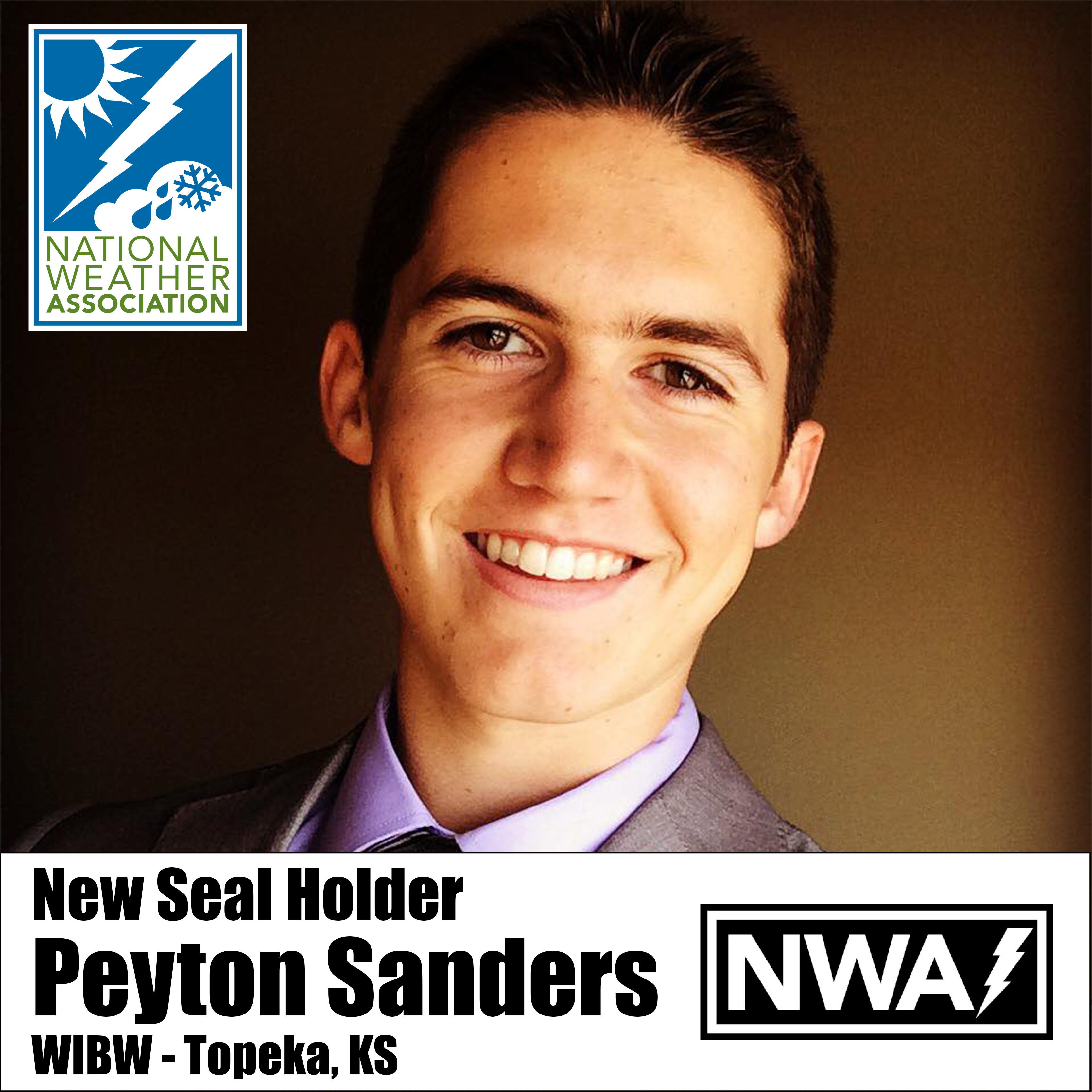
Congratulations to Peyton Sanders on earning his TV Weathercaster Seal of Approval!
Follow Peyton on Facebook and Twitter.
See all the other members who have earned a TV, Radio, or Digital Seal here, and more information on becoming a Seal Holder here.
Return to Top
NWA Jobs Corner
Are you hiring? Reach a variety of candidates through the NWA Jobs Corner.

Return to Top
National Weather Association | 3100 Monitor Ave, Suite 123 | Norman OK 73072 | 405.701.5167
Publisher: Janice Bunting, NWA CEO
Editor: Bryce McElhaney, NWA Communications and Marketing Coordinator
Technical Editor: Winnie Crawford
Submit newsletter items to [email protected]
using the NWA Newsletter Instructions for Authors
Copyright © 2020 National Weather Association, All rights reserved.
|
